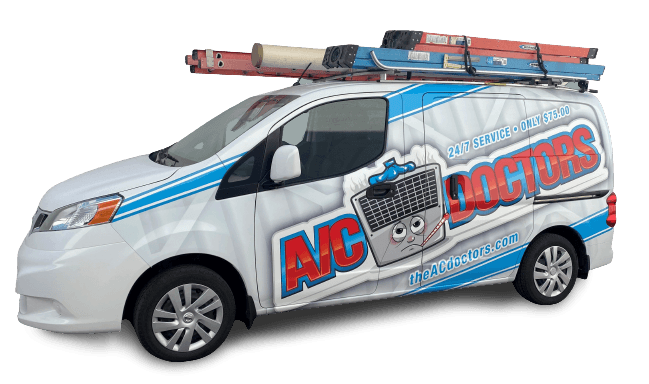Scientists have warned of the dangers of UV radiation exposure for years. It can be extremely harmful to humans, leading to everything from premature skin aging to cancer. Given that, you may be a bit perplexed about why HVAC companies have started promoting UV sanitization systems. It may even lead you to dismiss them as a solution out of hand. However, if you do dismiss them, you might miss out on one of the greatest indoor air quality innovations in decades. Here’s a complete guide to UV radiation and why you’ve nothing to fear from UV sanitization systems.
What Is UV Radiation?
UV radiation refers to electromagnetic waves with wavelengths between 100 and 400nm. It is naturally emitted by the Sun and from artificial sources like tanning beds. Although it’s a form of light, human eyes can’t see UV wavelengths, which adds to their danger. Within the UV spectrum are three distinct wavelength groupings, each with its effects.
The first is UVA radiation, which falls between 315 and 400nm. UVA radiation can penetrate your skin deeply, causing wrinkling and premature aging. The vast majority of UV radiation that reaches Earth from the Sun is UVA. It’s a relatively low-energy radiation that only harms humans through significantly prolonged exposure. As a result, tanning beds use mostly UVA radiation since it has the fewest long-term effects.
The second type is UVB radiation. It makes up approximately 5% of the UV radiation that reaches Earth from the Sun. It’s also hazardous to humans, even with minimal exposure. UVB radiation has a shorter wavelength than UVA, falling between 280 and 315nm. The reason it’s so dangerous is that UVB radiation can damage DNA, leading to mutations and cancer.
Finally, there’s UVC radiation, the most harmful form of UV radiation. The good news is that Earth’s ozone layer blocks the UVC radiation from the Sun. UVC radiation has a wavelength between 100 and 280nm. If it did reach the Earth’s surface, the Sun’s UVC radiation output would make our planet uninhabitable.
Why Are Companies Selling UV Sanitizers?
The same properties that make UV exposure hazardous to humans also make it a potent disinfection tool. The reason is that UV radiation has similar effects on things like viruses, bacteria, and fungi to human cells. So, installing a UVC light inside your ductwork or HVAC system can rid the air and internal HVAC surfaces of those things. Hospitals use similar systems to maintain sanitary conditions in operating rooms and other sensitive areas. Some even employ UV-light-armed robots to sterilize rooms after use.
The process is quite simple. As air passes through your HVAC, contaminants pass through a field of UVC radiation. That radiation penetrates the cell walls of the pathogens, where it will have one of a few effects. With enough exposure, the radiation can destroy a virus, bacterium, or fungi completely. Shorter exposure may damage its DNA enough to render it incapable of infecting a host. At a minimum, passing through a field of UVC radiation renders pathogens sterile. That means they cannot reproduce, sharply limiting the harm they may do. All three outcomes mean fewer active viruses, bacteria, and mold are circulating in your air. Through prolonged use of UV light treatments, you can bring the levels of such contaminants down to imperceptible levels.
Types of HVAC UV Sanitization Systems
Two types of HVAC UV sanitization systems are on the market today. They both function in the same way but accomplish different things. Here’s what they are.
Coil Sanitizing UV Systems
As its name suggests, a coil sanitizing system keeps contaminants off your HVAC evaporator coil. It gets installed inside your HVAC indoor unit, where it works to kill mold and bacteria that would otherwise settle and thrive there. A coil sanitizer should keep your HVAC working efficiently by preventing anything interfering with coil heat transfer. It’s worth noting that most coil sanitizers always remain on whether your HVAC runs or not. That makes them simpler and less expensive than the other UV sanitization option, air sanitizers.
Air Sanitizing UV Systems
An air sanitizing UV system gets installed inside your HVAC ductwork, which reduces pathogens in your home’s air. It will also help keep your evaporator coil cleaner, but only if installed in your return ductwork. If installed in your supply ductwork, it may better clean the air circulating through your home. Unlike a coil sanitizer, however, an air sanitizing UV system only turns on when your HVAC runs. That increases installation complexity and cost. In exchange, you get a system with wider ranging benefits for your home.
Are UV Sanitization Systems Safe?
A UV sanitization system in your HVAC efficiently reduces the number of pathogens in your air. They don’t cost much to run, owing to the low-wattage lamps required. But given the threats UV radiation poses to humans, you may wonder how safe they are. The answer is that UV sanitization systems are completely safe if you use them properly. For one thing, UV radiation leaves no lasting aftereffects on the air passing through it. UV radiation is only a threat to humans through direct exposure. So, unless you plan to open your HVAC system and stick your arm inside, there’s no problem. However, installing one does mean that DIY HVAC repair becomes a hazardous endeavor.
HVAC technicians qualified to work with UV sanitization systems know what precautions to take while they work. That includes wearing specialized protective equipment like safety glasses and UV-resistant gloves. That’s important to know because a UV light system will need its bulb replaced every nine to 24 months. The bulbs lose potency over time, reducing the system’s effectiveness.
Is UV Sanitization Alone Enough?
It’s important to note that UV sanitization cannot help to remove dust and allergens from your home’s air. For that reason, most people pair a UV system with an upgraded air filtration system. That can provide optimal air purification that addresses all possible pollutants. Solutions can range from a higher-MERV HVAC filter to installing an inline air purifier. If you have someone with severe allergies in your home, a whole-home HEPA filtration system may be necessary. Those work alongside your HVAC by trapping additional contaminants as air passes through your ductwork.
Local Indoor Air Quality Specialists
A/C & Plumbing Doctors is a family-owned home services company offering indoor air quality solutions in Gilbert. Additionally, we provide HVAC installation, repair, and maintenance, including working with commercial systems. We also offer comprehensive plumbing and ductwork services. Our team of HVAC technicians and plumbers have the latest training and tools, and they are drug-tested and smoke-free. When you work with us, expect upfront competitive pricing and paperless billing. You can also expect timely arrivals and respectful service. We even offer convenient financing options on approved credit to pay for new HVAC systems and larger projects. Feel free to check out our customer reviews for a preview of what to expect from us. If you’re considering a UV sanitization system or an air purification system for your Gilbert home’s HVAC, call A/C & Plumbing Doctors!





